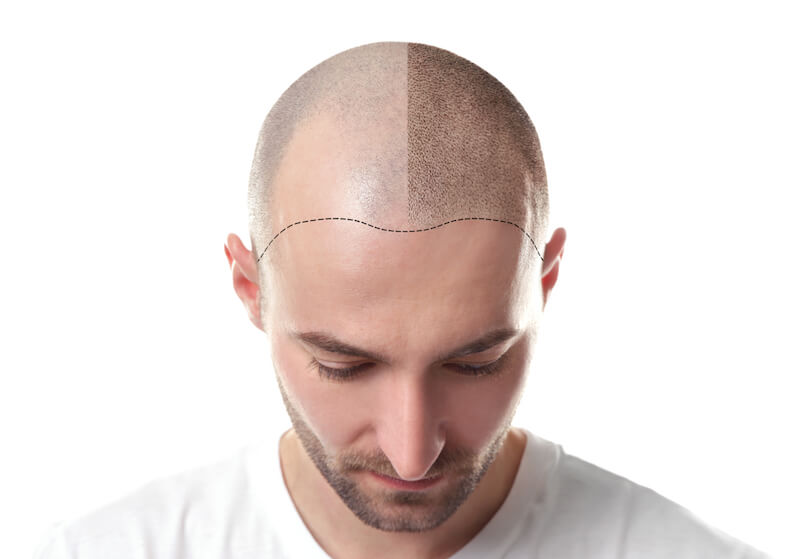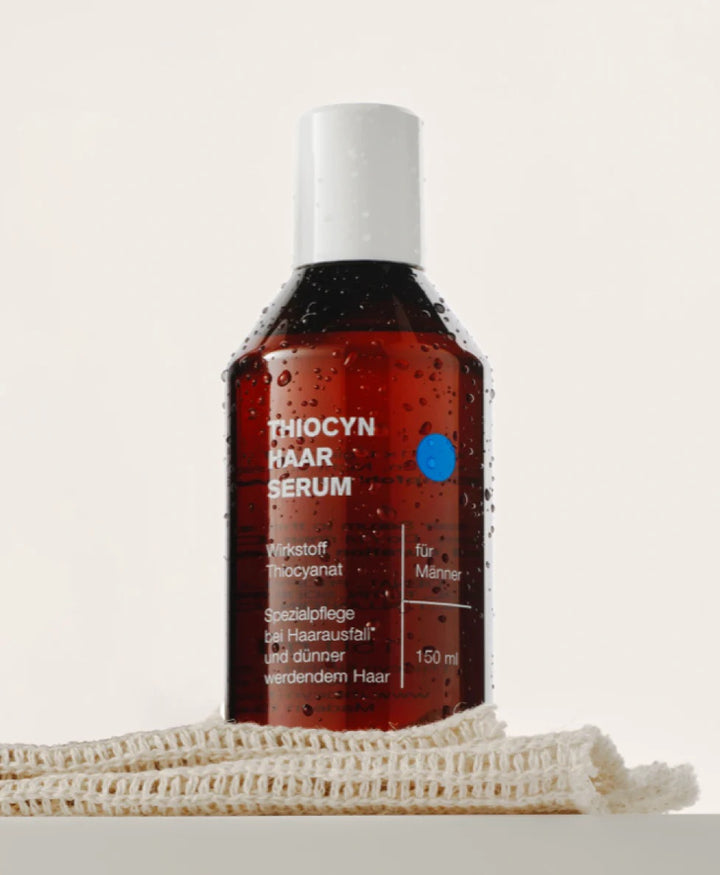| 04. July 2023
Hair loss after hair transplantation

- Anyone who undergoes a hair transplant wants to optimize their appearance.
- Receding hairlines disappear, thinning hair becomes thicker: the treatment is successful.
- The problem: hair loss after hair transplantation.
- Now it is important to support the regeneration of transplanted hair follicles and to strengthen weakened hair follicles.
Hair transplantation is a frequently tested treatment for controlling hair loss when large bald patches have already formed on the head, usually as a result of hereditary hair loss. The FUE method is enjoying increasing popularity. Before-and-after photos from clinics demonstrate convincing results. What patients often overlook is the fact that the Hair loss is by no means over after the hair transplant.
Experiences with hair transplants
If everything goes well: manageable costs, no complications, and a satisfactory result – a hair transplant makes you very happy. The years of suffering experienced by men, and increasingly also by women, disappears practically overnight. Nevertheless, there are risks associated with a hair transplant. To rule out risks such as scalp infections, scarring from overly densely planted hair follicles, or cosmetic defects such as misaligned root canals, it is important to carefully review and compare the offers of potential clinics. Initial contact is often made online. Every reputable clinic, whether in Germany, Hungary, or Turkey, then devotes a great deal of time to informing prospective patients, including in person. A final, trust-building step before the hair transplant is a meeting with the surgeon who will perform the treatment.
After the hair transplant
In recent years, there has been an increasing demand for minimally invasive hair transplants. FUE method (Follicular Unit Extraction). However, even the most gentle hair transplant has side effects. In addition to a sore scalp, swelling of the face, especially the eyes, is almost impossible to avoid. Furthermore, hair loss after a hair transplant is completely normal.
It's best to take a vacation at home after the transplant to avoid any mechanical stimuli on the head. It generally takes between four and six months to assess the results of a hair transplant, and you should wait a year for a final assessment.
Please note: The problem of hair loss remains acute even after a hair transplant. We name three reasons:
1. Surgical shock of the hair follicles
If hair falls out immediately after transplantation, it is initially very worrying, but almost unavoidable and in most cases not a sign of a failed treatment. The cause of hair loss is surgical shock. The surgeon separated the hair follicles from the fine blood vessels using extraction needles. Cut off from energy and the building blocks of hair substance, such as proteins, the hair follicles cannot produce hair substance and shed the hair. When the hair finally grows slowly in the new environment and is reconnected to the bloodstream, it begins to produce hair again and forms strong, healthy hair.
2.Hair aging process
Unlike hair that falls out over the years, transplanted hair from the back of the head grows throughout life. However, this does not protect it from the effects of aging. Around the age of 50, when hair follicles find it increasingly difficult to cope with harmful metabolic byproducts, such as oxidative stress (oxygen radicals), hair loss occurs. The number of hairs decreases across the entire head, including in the areas where hair was transplanted.
3. Hereditary hair loss
Right next to the transplanted hair are the genetically misprogrammed hair follicles, whose fate is to miniaturize according to the laws of hereditary hair loss and then cease hair production altogether. The experienced hair surgeon has therefore identified areas within his clients' hairline containing additional donor hair, which could be transplanted into newly developing bald patches a few years after the initial hair transplant.
In any case, it is important to find a good time for the hair transplant, not too early because hair loss is still progressing, but also not too late because it may be difficult to fill large bald spots in an aesthetically pleasing way.
Conclusion
A hair transplant is not the final solution to all hair problems. It is useful to promote healthy hair growth in two directions. First, the healing of the itchy scalp and to support the transplanted hair follicles in their growth and secondly to compensate for growth-disturbing influences on permanently weakened hair follicles. For both purposes, Thiocyn hair serum with patented Thiocyanate-Active formula help.
Read by 23,000 people
Do it like 23,000 others and find out how you can improve your hair health - with great offers and discounts as well as helpful advice











